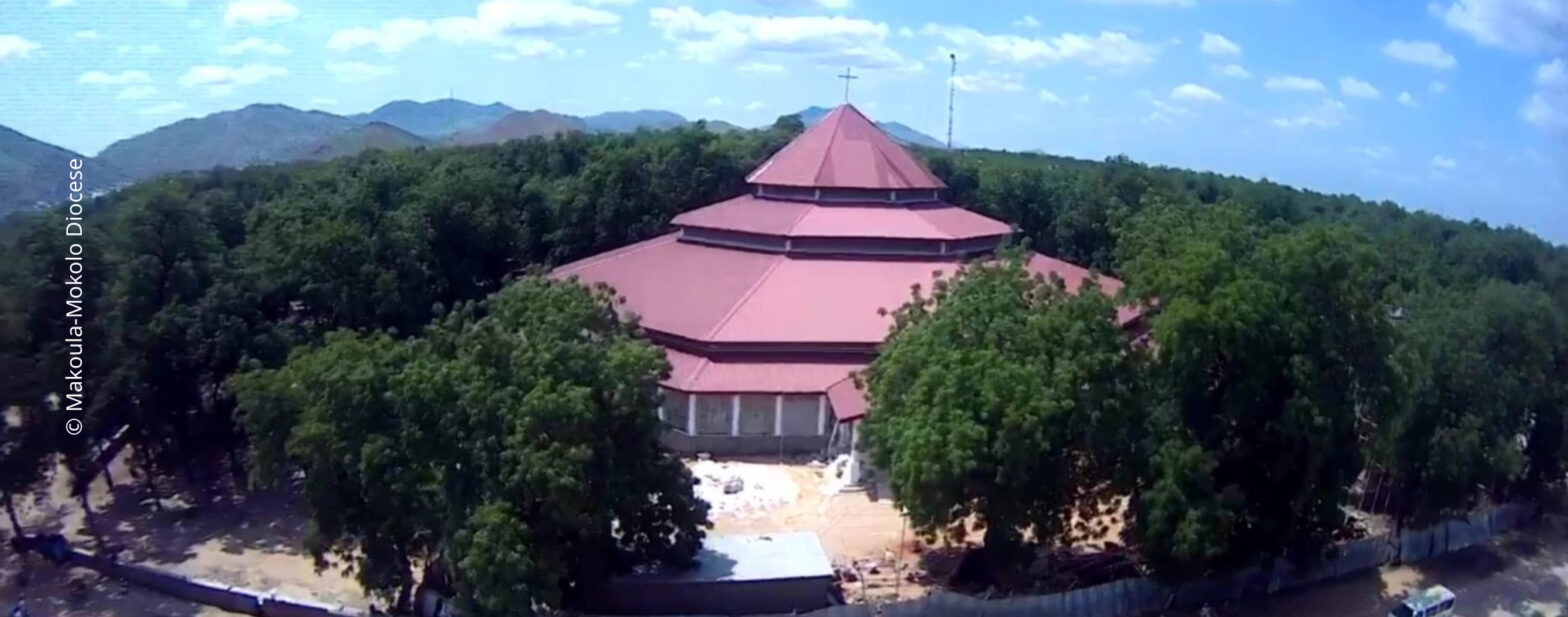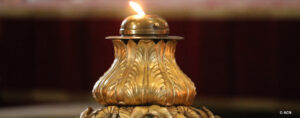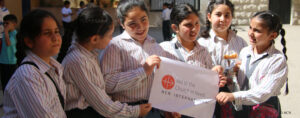Today, Saturday, July 8, this is the consecration of the Cathedral of Our Lady of the Assumption, in the city of Maroua—part of the Far North Region of Cameroon. This step will conclude the nine-year construction project in the heart of the Maroua-Mokolo Diocese, supported by international pontifical charity Aid to the Church in Need (ACN).
(Cover photo: the cathedral is seen from the air. Its shape symbolizes an African-style house).
Speaking about the occasion, Bishop Bruno Ateba Edo said: “We are proud and happy. Finally, we have a worship space where we can celebrate the Holy Mass with dignity.” He explained that prior to this, Mass had been celebrated either in a small and run-down church, or in what he referred to as the “bio cathedral,” under the canopy of trees.

According to the bishop, this new cathedral is “a sign of unity of all the city’s inhabitants,” adding that “in a city with over 600 mosques, it is important to show that the Catholic Church also has its space in Maroua.”
Maroua-Mokolo borders Nigeria and Chad, and has been the site of multiple terrorist attacks over the past years.
The diocese faces tremendous challenges: not only is it located in one of the poorest regions of the country, but it is also home to a large number of internally displaced Cameroonians and Nigerian refugees who fled their homes to escape the terror of Boko Haram. Besides the construction of the cathedral, ACN has also been supporting the diocese in Cameroon’s Far North with several aid projects for refugee children, as well as a refugee camp for Boko Haram victims in Minawao.
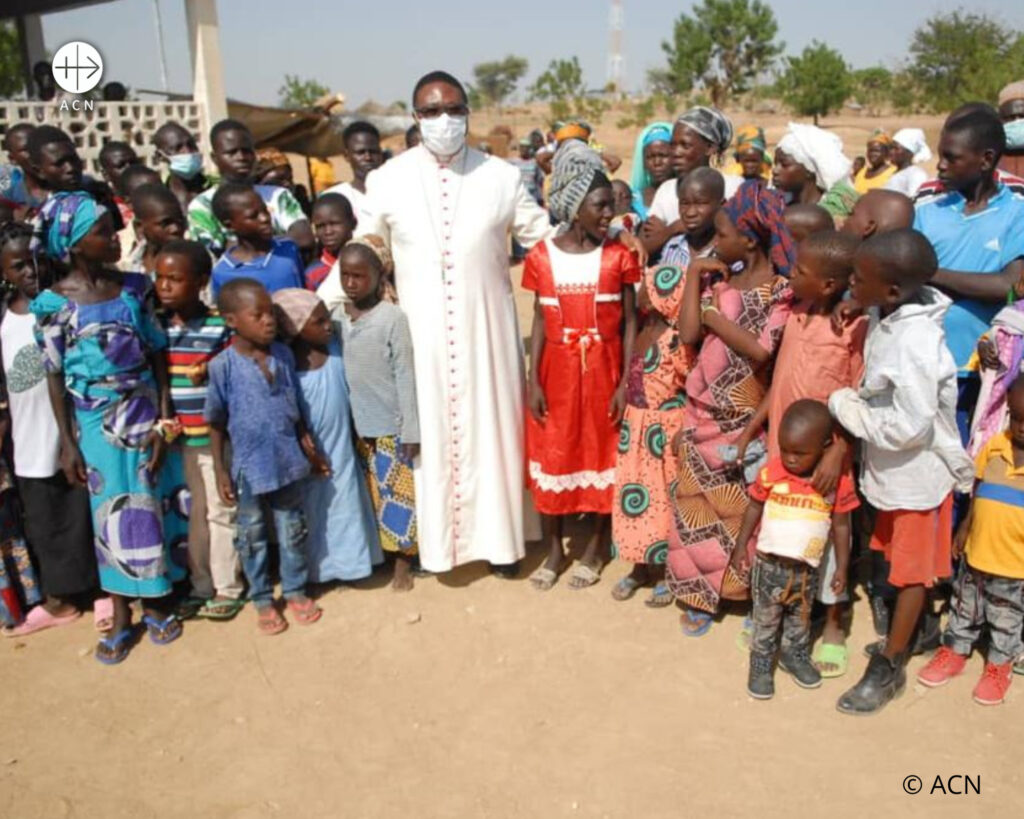
A blend of Christian and African motifs
The positive reaction of the residents of Maroua to the new cathedral fills the bishop with satisfaction: “Everybody shares our joy, regardless of their religion.” According to ACN, the local authorities ceded land in the centre of the city for the construction of the cathedral, and many locals, including Muslims, were involved in the actual building. A local artist, aided by his students, painted the frescos that decorate the interior.
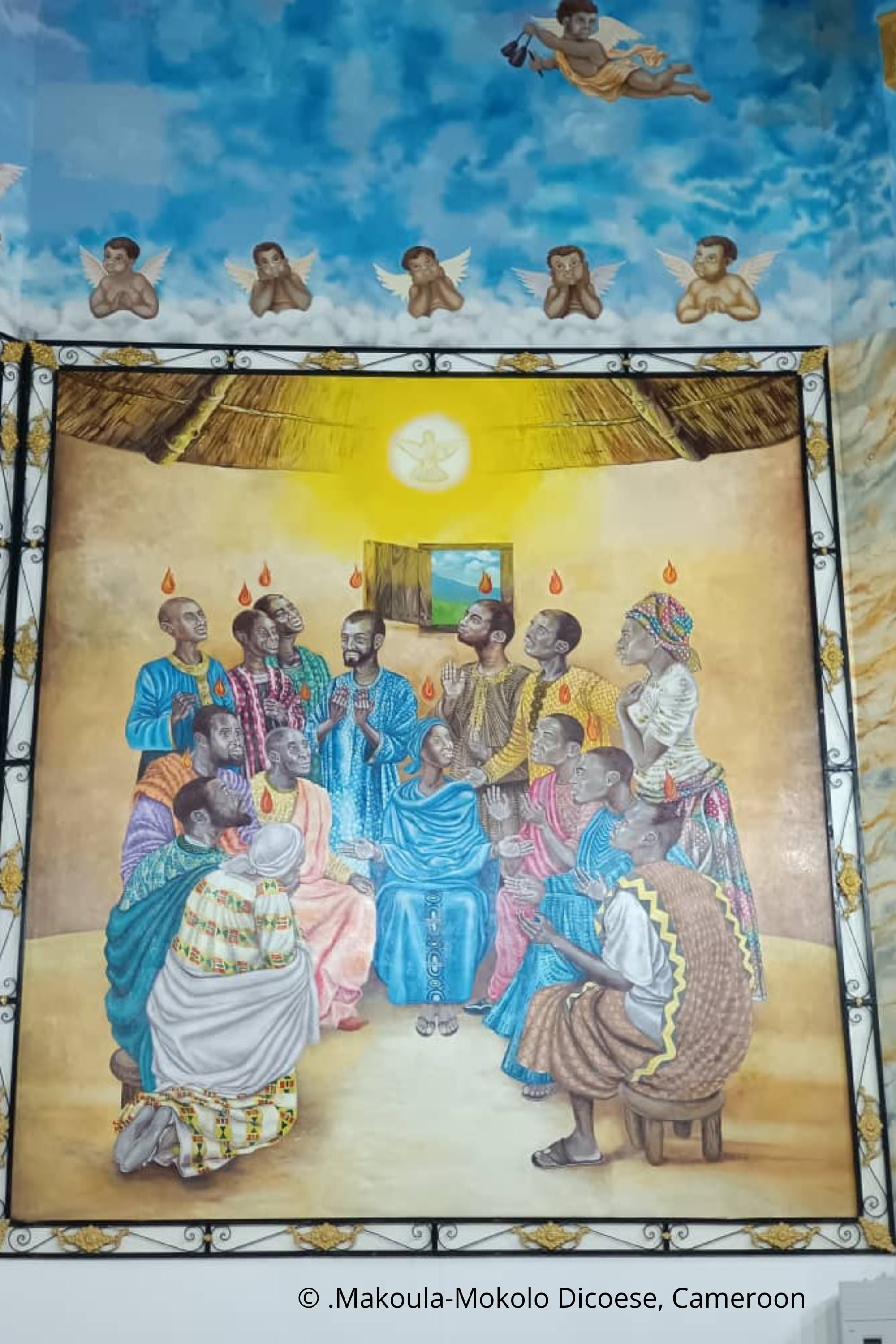
The diocese says that the new cathedral, which is dedicated to Our Lady, has room for 3,500 worshippers, and its decoration is a blend of Christian motifs and local culture. The shape of the building represents a traditional African house, and the images and frescos have an African touch. “For us, these paintings are catechetical, because ours is still a very young faith,” Bishop Ateba explains.
The main artistic themes in the new cathedral are the Assumption and the maternal protection of Our Lady, and the contours of the building are meant to evoke Blessed Mary’s mantle, embracing and protecting believers. The inner columns are positioned to form the letter M, for Mary, and the four pillars that hold up the ceiling are shaped like a star that reaches up, symbolising the Assumption of the Virgin Mary.

Bishop Ateba is very grateful to all ACN benefactors, as well as to other aid organizations for their economic contributions that made the construction of the new cathedral possible.
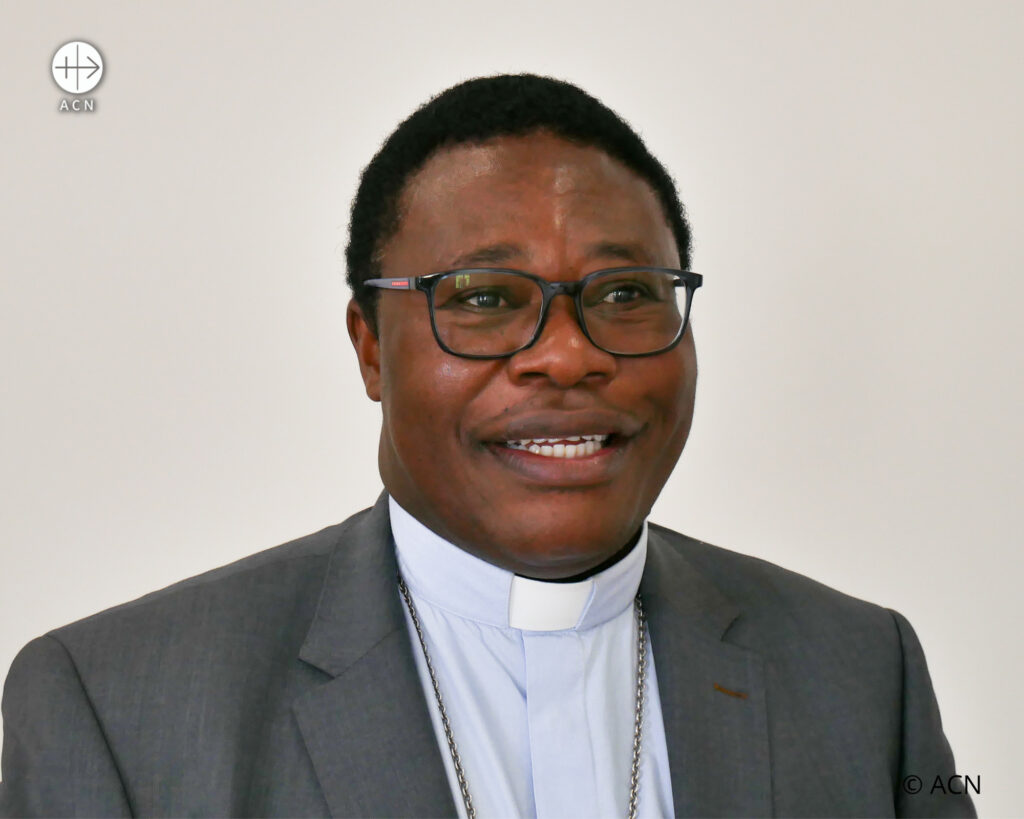
The Diocese of Maroua-Mokolo was erected in 1973 and covers 14,332 square kilometres. With an estimated population of around two million, around 40% of the inhabitants are Muslim, 30% Christian, and another 30% are followers of traditional religions.

